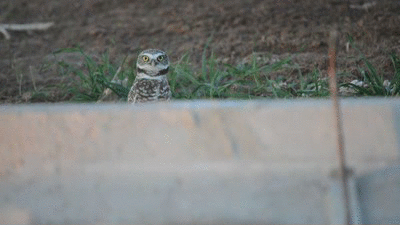
SOUTHERN CALIFORNIA
CHAPARRAL
WHAT IS SOUTHERN CALIFORNIA CHAPARRAL?
The Southern California Chaparral is an ecosystem containing regions often characterized by fires and known for its hot, dry summers and mild winters ("Chaparral Facts," n.d). It runs along the central and southern coast of California and down into the Northwest coast of the Baja Peninsula (Hogan, 2014). Chaparral is primarily a California phenomenon, although there are some wonderful chaparral "islands" at higher elevations in parts of Arizona and similar shrublands in the central Rocky Mountains and Northeastern Mexico. Home to many plant species, the distinct climatic patterns of the chaparral have caused the plants and shrubs to adapt by having small, leathery leaves to absorb water during drought periods and short statures due to the low amount of water they receive ("Chaparral Facts," n.d). Like many other ecosystems, the California Chaparral is threatened by humans and their actions such as urbanization and clear-cutting, in addition to the fires that already pose a threat to its well-being. However, through progressive actions, the status of the Southern California Chaparral ecosystem can definitely improve and maintain a consistent healthy condition.
HISTORY OF THE CHAPARRAL
Catastrophic events from many years ago are the logic behind the beautiful California landscape we have today. Fire, drought, human immigration, floral and faunal immigration, climatic change and extinction, have all been important since the Mediterranean-type climate first appeared (Bartolome & Spiegal). The ecological history of the California landscape starts with the process of plate tectonics and influenced by the cold California Ocean current which then developed the characteristic of Mediterranean climate over the past 3 million years. The Chaparral had been experiencing dramatic decrease in rainfall, for nearly 7 million years, which caused some plants to die out, but many learned to adapt. Fires played a big role in the change in the Chaparral, changing the structure and expanding some areas. Composition is the main outcome from the fires and fires are still shaping the Chaparral today. Many plants did not know how to adapt to the fires therefore some were burned off. But as the years went by and fires became normal, many plants learned to adapt as they do now in the Chaparral. As we can see, the change in the state of California played a role in the Chaparral, which allowed many plants and animals to adapt. These changes helped shape the structure and even expand the overall biome.
Historically, chaparrals have been characterized for the most part as they are now, prone to frequent fires that pose threats to the wellness of the ecosystem. However, as time passes and fires occur more often, the beauty and abundance of Southern California chaparrals have begun to diminish. Old growth chaparrals have a special importance with regard to history, since these plants are significantly older than other species that make up the chaparral. When fires occur, these older plants and trees are destroyed and their years of growth vanish, unable to regrow and gain back their characteristics ("Chaparral Facts," n.d.). Yet, these areas have been replaced by non-native and invasive species that pose a threat to the ecosystem in its current state ("Chaparral Facts," n.d.). Another factor that contributes to the changes in the California chaparral over time has proven to be due to climate change patterns. Since climate change affects the distribution of vegetation throughout ecosystems due to shifts in temperature and precipitation, Mediterranean climates like the chaparral are expected to experience a loss in the number of shrublands in Southern California and biodiversity shifts to the north ("Chaparral Facts," n.d.). Despite these changes, the California chaparrals are nonetheless important areas of the earth that need to be cared for and respected by humans that live in or near the ecosystem.

Map of the area of the Southern California Chaparral ecosystem, which reaches from just north of Los Angeles down into Baja California (Hogan, 2014).










